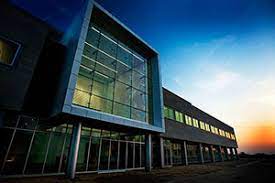
Throughout history, college campuses have transformed students into global leaders by equipping them with the resources and knowledge required to address the world’s most troubling issues. That’s a critical component of every aspect of our well-being around the world. So, it is important for U.S. colleges and universities to have the talent and the required resources to maintain the nation’s competitiveness. That task, however, is not easy.
Costs for colleges and universities continue to escalate, and wages for instructors and administrators increase. Technology upgrades are required, research labs are needed, and online curriculum demands even more. The pressure to meet critical needs and manage costs has escalated – so much so that the interest in collaborative partnerships with private-sector companies has reached new heights. Here are a few examples of large initiatives that definitely require participation from the private sector.
The University of Iowa has plans for a $9.2 million expansion of the State Hygienic Lab in the city of Coralville. Currently, the lab is processing 1.6 million COVID-19 specimens that were collected over the last two years. The research being done is timely and critical, but more resources are required. Additional space created inside the biosafety lab expansion project will ensure that the facility has capacity to house all aspects of the testing program, including wastewater tests for COVID transmission among shared-building populations. The university’s board of regents will meet at the end of January to discuss expediting the project so that construction may begin in 2022.
Several projects tied to the University of North Carolina will revitalize not only the teaching campus but also the city of Chapel Hill. In December 2021, the town council approved what is called the 150 East Rosemary project, an initiative that will create 238,000 square feet of office and research space. Final plans for the facility also designate the addition of retail space on the ground floor along with offices, wet labs, and a three-level parking garage. Another initiative, the Porthole Alley Project involves the construction along the heavily trafficked Franklin Street. Concept planning documents outline two buildings connected by a skybridge that will be designed with two bookended public greenspace areas. The new buildings will include retail space along with offices for the UNC Visitors Center and Undergraduate Admissions Department. Collaborative meetings involving local official, university administrators and community leaders are continuing, and another initiative is already being planned. The Aspen Heights Project includes a six-story building featuring 124,000 square feet of student housing space and a parking deck with 73 spaces.
In November 2021, officials at Appalachian State University authorized $54 million for an Innovation District within the university’s campus in Boone, North Carolina. As the Innovation District evolves, a sequence of construction projects will be announced. Construction is planned and over the next few months, university officials will announce additional project plans. This will include initiatives related to research laboratories, studio spaces, and renewable energy facilities.
In Boston, the city’s planning and development authority is gathering public input on construction planned for Simmons University. A mixed-use development initiative is receiving input from university officials, city leaders, private-sector contractors, and citizens. Four new facilities offering a combined 1.8 million square feet of space for offices, a laboratory, residential units, and retail establishments are being planned. This is truly a public-private initiative that will stimulate the economic vitality of the entire region.
The Laramie Community College campus in Wyoming will soon launch several construction projects. As part of the college’s five-year master plan, 25 different campus facilities are targeted for both short- and long-term construction projects. The campus will be enhanced with numerous refurbishments including unique landscaping, upgraded training centers, and state-of-the-art sports complexes. An information and technology training center is also under consideration.
Officials with the University of Pittsburgh in Pennsylvania are meeting with student body representatives and advisory panels to finalize the design of a new Campus Recreation and Wellness Center. The new center will feature 270,000 square feet of amenities including a recreational pool, jogging track, basketball courts, and other multi-purpose spaces. Demolition of a parking garage is underway to make room for the new construction. Officials anticipate that construction will begin in spring 2022 with completion by late 2024.
Over the next two years, tens of millions of dollars will fund various projects to refresh facilities at the University of South Dakota’s central campus. Officials have assigned a budget of $25 million for expanding the campus’ Wellness Center. Construction will create an additional 45,800 square feet of space to accommodate hot tub facilities, a steam room, a wellness pool, and an indoor competition pool with seating for 400 people. The construction phase on the effort will begin in 2022. Simultaneously, the university’s Student Union building will undergo renovations. Approximately $5 million has been allocated for upgraded classrooms and office and lab space for the university’s psychology department.
Further evidence of this nationwide trend is obvious on the Eugene-based campus of the University of Oregon. A budget of $58.5 million in state funding has been requested for the university’s “Heritage Renovation Project,” which will likely have a total cost of $64.4 million. The project is specifically scoped for renovations to Villard Halls which are over 150 years old. The buildings have enjoyed the distinction as National Historic Landmarks, but now renovations are required to improve safety, provide mandated accessibility, and ensure sustainability.
Large initiatives such as these often require some type of public-private sector partnership or new delivery method. And, although public funding is more abundant now than in the past, many of the initiatives are being financed with private-sector investments. This trend shows no sign of slowing down in the upcoming years.
